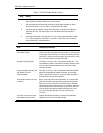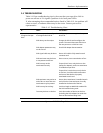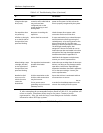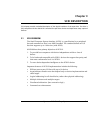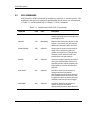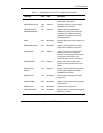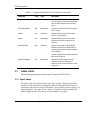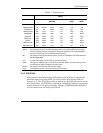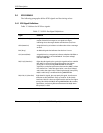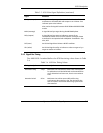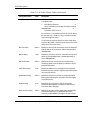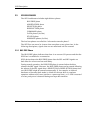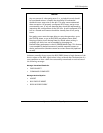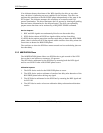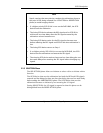
SCSI Description
3-6 Quantum DLT 7000 Tape System
3.4 SCSI SIGNALS
The following paragraphs define SCSI signals and bus timing values.
3.4.1 SCSI Signal Definitions
Table 3–3 defines the SCSI bus signals.
Table 3–3 SCSI-2 Bus Signal Definitions
Signal Definition
ACK (acknowledge) A signal driven by the initiator as an acknowledgment of
receipt of data from a target or as a signal to a target
indicating when the target should read the data (out) lines.
ATN (attention) A signal driven by an initiator to indicate that it has a message
to send.
BSY (busy) An OR-tied signal that indicates that the bus is in use.
C/D (control/data) A signal driven by a target that indicates whether CONTROL or
DATA information is on the DATA BUS. True (low voltage)
indicates CONTROL.
DB(7–0,P) (data bus) Eight data-bit signals, plus a parity-bit signal that form a DATA
BUS. DB(7) is the most significant bit and has the highest
priority (8 or 16-bit) during ARBITRATION. Bit number,
significance, and priority decrease downward to DB(0). A data
bit is defined as 1 when the signal value is true (low voltage)
and 0 when the signal value is false (high voltage). Data parity
DB(P) is odd. Parity is undefined during ARBITRATION.
DB(15–8,P1) (data bus) Eight data-bit signals, plus one parity-bit signal, that forms an
extension to the DATA BUS. They are used for 16-bit (wide)
interfaces. DB(15) is the most significant bit and has the higher
priority (but below bit DB(0) during ARBITRATION. Bit number,
significance, and priority decrease downward to DB(8). Data
Parity DB (P1) is odd.



